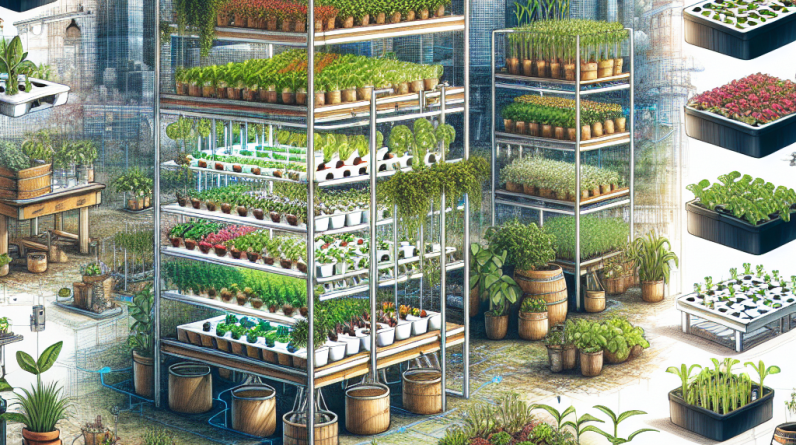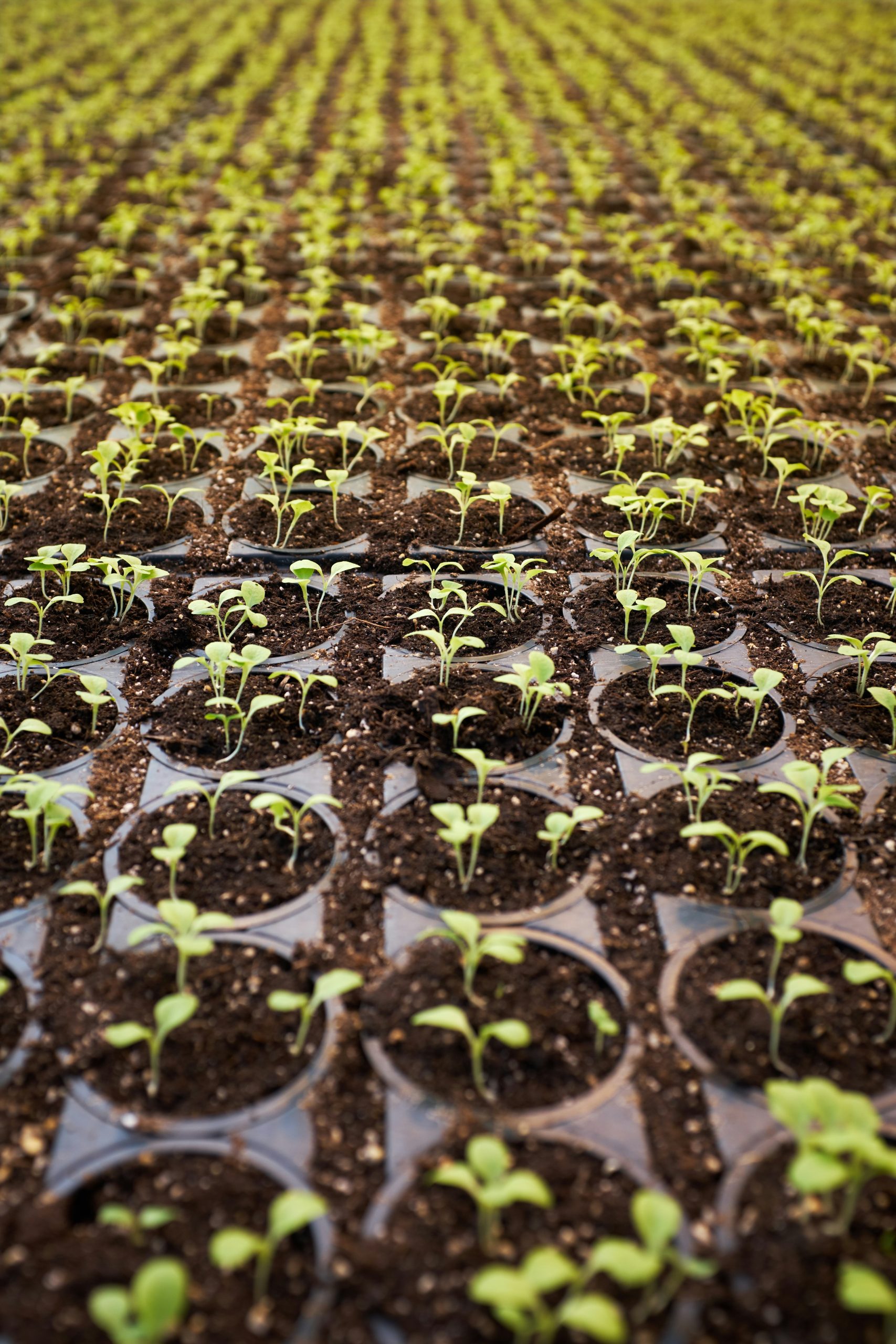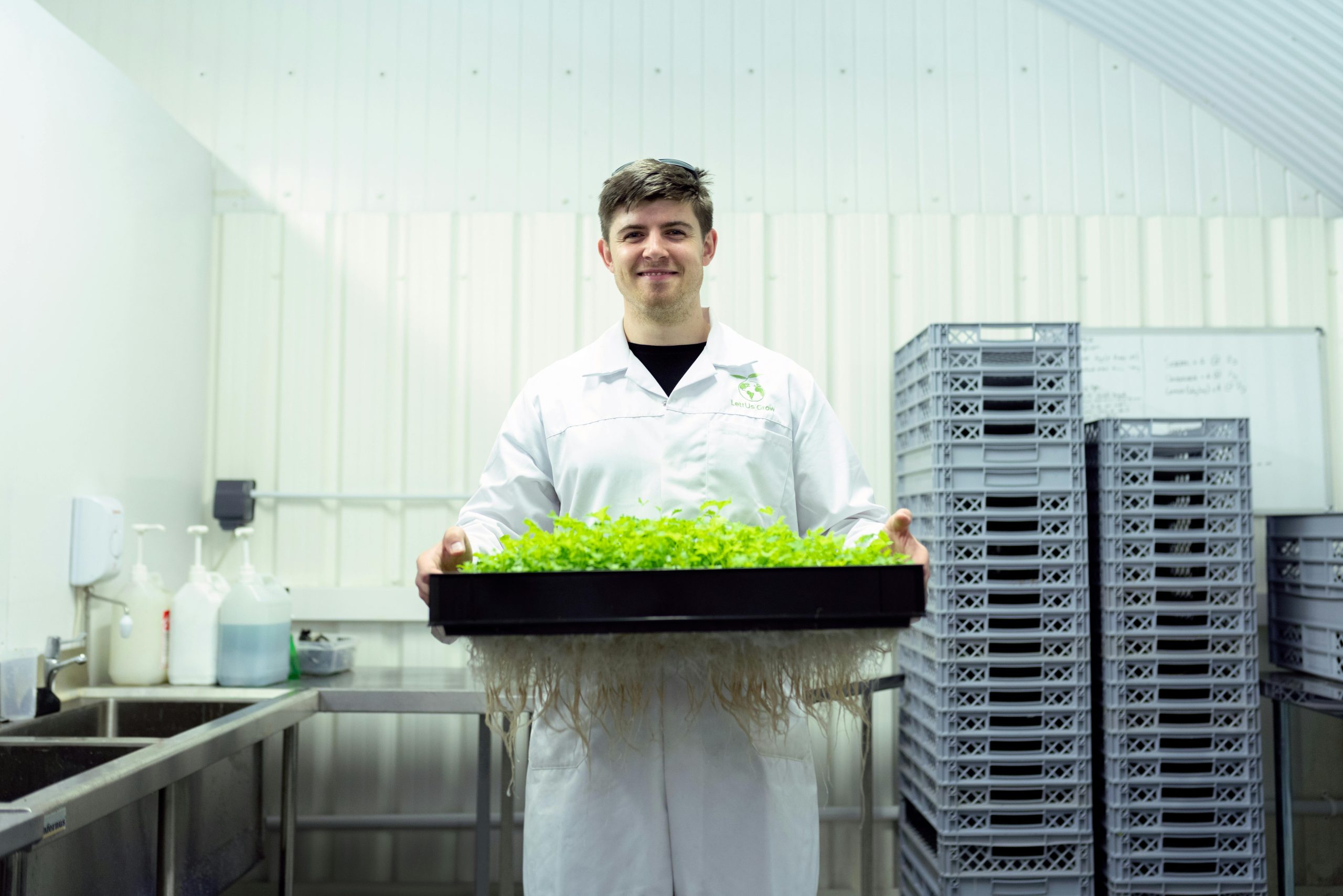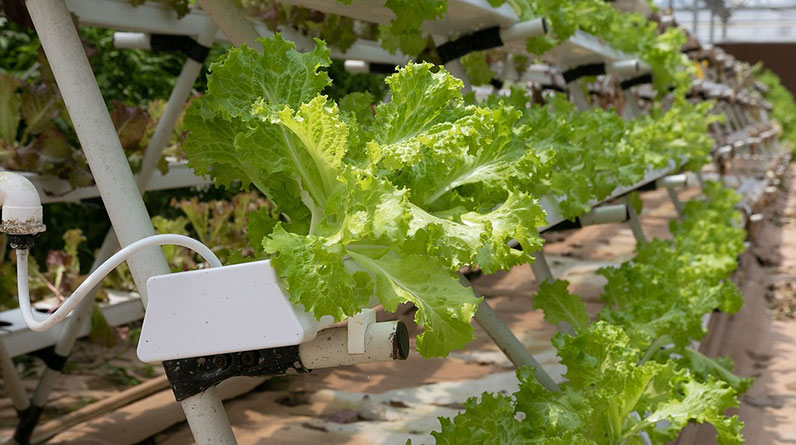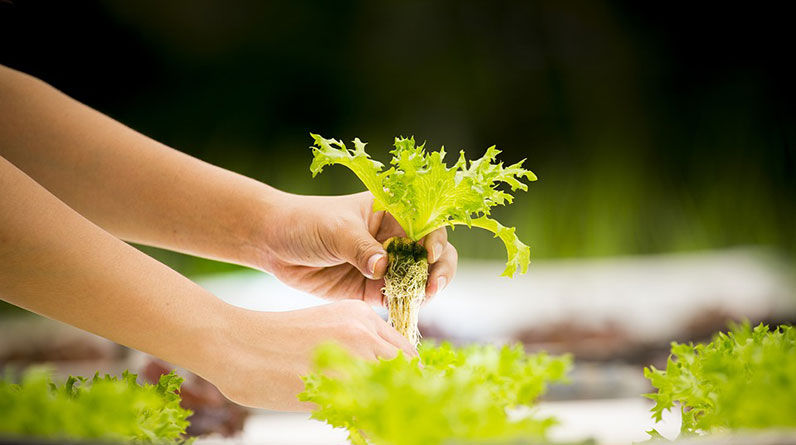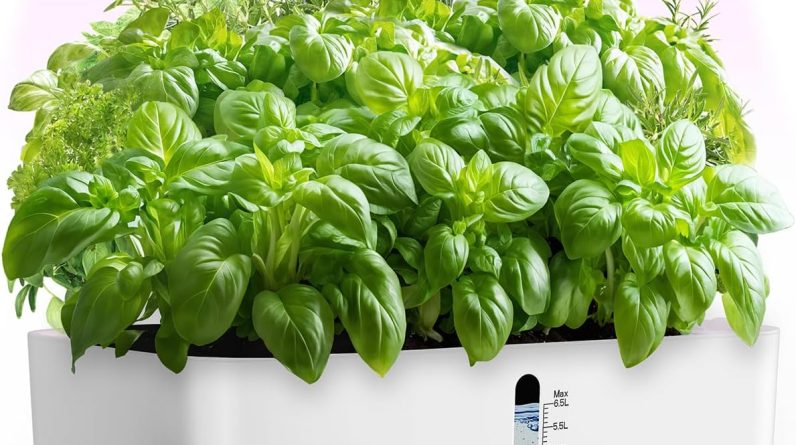
- 1. Lettuce and Leafy Greens
- 2. Basil and Culinary Herbs
- 3. Strawberries
- 4. Tomatoes
- 5. Peppers
- 6. Cucumbers
- 7. Microgreens
- 8. Kiwi
- 9. Spinach and Swiss Chard
- 10. Melons and Watermelons
In 2025, hydroponic gardening continues to grow in popularity among hobbyists and commercial growers alike. As we seek innovative and sustainable ways to produce fresh, healthy foods, understanding the best plants for hydroponics becomes essential. Whether you’re a beginner or an experienced grower, selecting the right plants can make or break your hydroponic success. This comprehensive guide explores the top 10 plants ideal for hydroponic systems this year, backed by the latest research and practical insights.
1. Lettuce and Leafy Greens
Why Lettuce and Greens Are Perfect for Hydroponics
Lettuce and other leafy greens are among the easiest best plants for hydroponics due to their short growth cycles and minimal maintenance. They thrive in nutrient-rich water solutions, often yielding multiple harvests per season. In 2025, urban farms and home growers favor these plants for their quick turnaround and high nutritional value.
Research shows that hydroponic lettuce can grow up to 30% faster than traditional soil-based methods. Plus, they require less space, making them ideal for small-scale setups. Many growers report having fresh salads within just 30 days of planting in hydroponic systems.
Practical tips include maintaining optimal pH levels (around 6.0 to 6.5) and ensuring consistent lighting. Using LED grow lights can boost growth rates further. For maximum yield, consider growing different varieties like romaine, butterhead, or arugula to diversify your harvests.
Practical Advice for Growing Lettuce in Hydroponics
Start with quality seeds or seedlings designed for hydroponics. Regularly monitor your nutrient solutionâespecially nitrogen, which is vital for leafy growth. Remember, good airflow and water circulation prevent disease and promote healthy roots.
Harvesting multiple times can be achieved by trimming leaves carefully, allowing plants to regrow quickly. Keep an eye on pests like aphids or mites, which can be controlled with natural predators or organic solutions.
2. Basil and Culinary Herbs
The Rise of Culinary Herbs in Hydroponics
Basil, mint, cilantro, and other herbs are increasingly popular among hydroponic enthusiasts, especially in 2025. Their rapid growth and high demand in the culinary world make them some of the best plants for hydroponics to cultivate for both personal use and sale.
Herbs like basil flourish in hydroponic systems because they shouldnât be planted directly in soil. Instead, they thrive in nutrient solutions, which allow for precise control over their growing conditions. Basil, for example, can be harvested every 3-4 weeks, making it a highly rewarding plant.
Scientific studies indicate that hydroponic herbs contain higher levels of essential oils, enhancing their flavor and aroma. This makes them particularly appealing in gourmet cooking and herbal medicine applications.
Growing Tips for Hydroponic Herbs
Integrate herbs into your hydroponic setup by using deep water culture or drip systems. Maintaining a consistent temperature around 22°C (72°F) and good airflow helps prevent mold or mildew. Nutrient supplementation should focus on potassium and phosphorus to promote aromatic oil production.
Experiment with different varieties; some herbs like cilantro prefer cooler environments, while basil favors warmer conditions. Regular pruning encourages bushier growth and better yields.
3. Strawberries
Growing Sweet Strawberries Hydroponically
Strawberries are considered one of the best plants for hydroponics to grow indoors or on small patios. The 2025 trend favors soilless cultivation techniques that produce cleaner, more flavorful berries with less pest pressure.
Modern hydroponic systems, like vertical towers and NFT (nutrient film technique), maximize space efficiency. They are perfect for producing strawberries year-round, regardless of climate conditions. This method is especially popular in urban and indoor farming setups.
Strawberries benefit from a slightly acidic pH (5.5-6.5) and consistent nutrient delivery. Choosing disease-resistant varieties tailored for hydroponic culture enhances success rates.
Practical Tips for Hydroponic Strawberry Cultivation
Use floating rafts or vertical systems for best results. Regularly check for signs of fungal infections or pests like spider mites, which are less prevalent but still possible in controlled environments. Adjust light exposure to promote flowering and fruiting.
Proper pollination can be achieved with gentle shaking or the use of small brushes, since many indoor setups lack natural pollinators. With proper care, your hydroponic strawberries can produce high yields with superior flavor in 2025.
4. Tomatoes
Why Tomatoes Are Top Choice for Hydroponics
Tomatoes remain a cornerstone among the best plants for hydroponics. Their high market demand, adaptability, and nutritional benefits make them a favorite for commercial and home growers in 2025. Modern hydroponic systems, such as drip and aeroponics, support vigorous growth and abundant fruiting.
Tomatoes are particularly suited for controlled environments that optimize light, temperature, and nutrients. Advances in LED technology have further improved growth efficiency, reducing energy costs and boosting yields.
Research shows hydroponically grown tomatoes can produce 30-50% higher yields per acre compared to soil methods, emphasizing their profitability.
Growing Techniques and Tips for Tomatoes
Support tomato plants with trellises or cages to maximize space and airflow. Maintain a nutrient solution rich in potassium and calcium to prevent common ailments like blossom end rot. Keep temperatures around 22-26°C (72-78°F) for optimal flowering.
Regular pruning and pinching help improve air circulation and fruit quality. Incorporate supplemental lighting during short winter days to extend growing seasons and boost productivity.
5. Peppers
Peppers: A Hot Favorite in Hydroponic Gardens
Sweet and hot peppers rank among the best plants for hydroponics in 2025 due to their versatility and high economic value. They respond exceptionally well to controlled nutrient delivery, resulting in vibrant, flavorful harvests.
Peppers thrive in systems like deep water culture and nutrient film technique, which provide consistent moisture and nutrients. Their relatively short maturation periodâabout 60-90 daysâallows for multiple harvests per year in suitable conditions.
Weather fluctuations and pests are less of a concern indoors, making peppers a reliable choice for hydroponic growers.
Tips for Growing Peppers Hydroponically
Maintain daytime temperatures of 24-29°C (75-85°F) and slightly cooler nights. Use high-light intensity with supplemental LED lighting to ensure proper fruit development. Regular feeding with potassium-rich nutrients enhances fruit size and flavor.
Pruning unnecessary branches and supporting plants off the ground prevent diseases and improve air circulation. Harvest peppers when they turn their mature color, such as red, yellow, or orange, for best taste and appearance.
6. Cucumbers
The Advantages of Growing Cucumbers Hydroponically
Cucumbers are among the top best plants for hydroponics because of their high water content and fast growth cycle. They perform well in NFT and drip systems, which support their vining habit and vigorous growth.
Hydroponic cucumbers often yield higher quality produce with fewer pesticide requirements. In 2025, growers are adopting vertical systems to maximize limited space, especially in urban setups.
Research indicates that hydroponic cucumbers can produce up to 2-3 times more fruit per plant compared to traditional soil cultivation under optimal conditions.
Growing Tips for Hydroponic Cucumbers
Support vines with trellises to encourage upward growth and reduce disease risk. Keep nutrient solutions balanced in calcium and magnesium to prevent issues like blossom-end rot. Control humidity and temperatureâideally around 25°C (77°F)âto foster growth.
Regular pruning of side shoots improves air circulation and yields. Harvest cucumbers when they reach optimal size and color for the best flavor and texture.
7. Microgreens
Why Microgreens Are a Must for Hydroponic Gardens
Microgreens are incredibly popular as some of the best plants for hydroponics because they grow quickly, often within 10-14 days. They are highly nutritious and ideal for small-scale or indoor setups in 2025.
Many chefs and health-conscious consumers favor microgreens, which can include varieties like radish, sunflower, kale, and arugula. Their compact size and swift harvest cycle make them perfect for year-round cultivation.
Hydroponic microgreens use minimal resources and donât require soil, making them a sustainable choice for urban farmers.
Growing Tips for Microgreens in Hydroponics
Use shallow trays with a light substrate like coconut coir or hydroponic mats. Maintain high humidity and provide 12-16 hours of light daily, preferably from LED grow lights. Use nutrient solutions rich in iron and nitrogen for lush growth.
Harvest microgreens with scissors when they develop their first true leaves, usually within 10-14 days. Proper sanitation prevents mold and ensures healthy produce.
8. Kiwi
Growing Kiwi Hydroponically in Limited Spaces
Although traditionally grown outdoors, kiwi vines are gaining popularity as hydroponic crops in 2025. Their high nutritional and commercial value makes them a promising best plant for hydroponics in controlled environments.
Hydroponic kiwi requires sturdy support structures and environmental controls to ensure healthy growth. It benefits from a slightly acidic pH (around 6.0-6.5) and attentive nutrient management.
Growing kiwi indoors or in greenhouses allows for extended fruiting periods and protection from pests and weather extremes.
Tips and Techniques for Hydroponic Kiwi
Implement vertical trellising systems to support vigorous vine growth. Maintain temperatures around 20-25°C (68-77°F) with proper lightingâpreferably full-spectrum LEDs. Consistent watering and nutrient delivery, especially potassium and phosphorus, are key.
Pruning and training vines help optimize fruit production. With patience and care, hydroponic kiwi can be an innovative addition to your 2025 garden.
9. Spinach and Swiss Chard
Leafy Powerhouses for Hydroponic Production
Spinach and Swiss chard are nutritious, fast-growing, and versatile, making them some of the best plants for hydroponics in 2025. They thrive in nutrient film technique and deep water culture systems.
Both crops are rich in vitamins and minerals, appealing to health-conscious consumers. Their relatively low light requirements and quick harvest cyclesâoften within 30-40 daysâmake them ideal for continuous cropping.
Optimizing the balance of nutrients, especially nitrogen and iron, enhances their vibrant color and nutritional profile.
Growing Tips for Leafy Hydroponics
Keep pH levels around 6.0-7.0 and maintain temperatures of 18-24°C (65-75°F). Consistent water circulation prevents root rot and promotes healthy growth. Use supplemental lighting when natural light is limited.
Regularly harvest outer leaves to stimulate new growth while maintaining plant health. Pest management focuses on organic solutions to protect delicate leaves.
10. Melons and Watermelons
Sweet and Juicy Fruits for Hydroponic Success
In 2025, larger fruits like melons and watermelons are increasingly grown hydroponically on a smaller scale thanks to advances in vertical and container systems. These best plants for hydroponics require more space and nutrient management but can produce impressive yields.
Hydroponic melons benefit from controlled temperature, high humidity, and ample space for vines to spread. Proper support and training are essential for fruit quality.
Studies show that hydroponic melons can ripen faster and have higher sugar content compared to soil-grown counterparts, appealing likely to commercial growers seeking premium quality.
Growing Tips and Techniques
Use trellises or netting to support long vines. Maintain daytime temperatures around 25-30°C (77-86°F). Nutrients high in potassium and calcium promote healthy fruit development.
Ensure pollinationâeither manual or assistedâsince natural pollinators are absent in indoor environments. Harvest when fruits reach full size and optimal coloration for best flavor and commercial quality.
Conclusion
Choosing the best plants for hydroponics in 2025 means selecting crops that maximize your space, yield, and sustainability. From leafy greens and herbs to berries and fruits, the right plants can transform your hydroponic setup into a highly productive garden. As technology and research continue to evolve, so do the opportunities for growing delicious, healthy produce indoors or in limited spaces. Whether you’re a hobbyist or a commercial grower, these top 10 plants will help you succeed this year and beyond.
FAQ
Q1: What are the easiest best plants for hydroponics for beginners?
Lettuce, herbs like basil, microgreens, and spinach are some of the easiest options for newcomers due to their fast growth and minimal care requirements.
Q2: Can I grow strawberries hydroponically indoors in 2025?
Absolutely! Indoor hydroponic systems make it possible to enjoy fresh strawberries year-round, with proper lighting, nutrients, and support structures.
Q3: How do I choose the right system for growing the best plants for hydroponics?
Consider your space, budget, and the types of plants you want to grow. Systems like NFT, deep water culture, and drip are popular choices depending on your crop selection and scale.
Q4: What nutrients are essential for hydroponic growth?
Key nutrients include nitrogen, phosphorus, potassium, calcium, magnesium, and trace elements. Tailoring nutrient solutions to each plant


